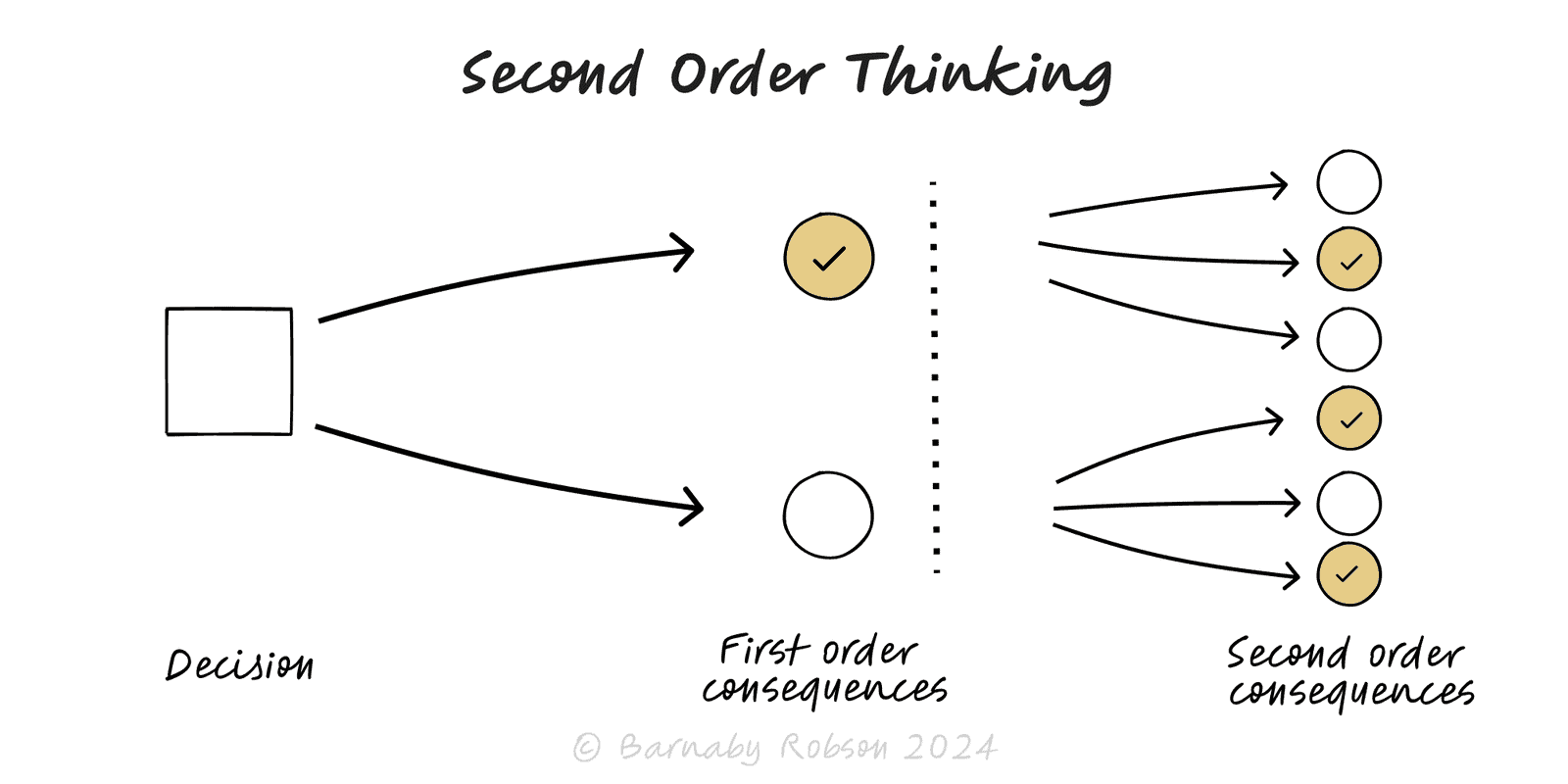Second Order Thinking
Common usage (Farnam Street popularised in business)

First-order thinking asks “what happens if we do X?”. Second-order thinking asks “and then what?”.
It forces you to model reactions (customers, competitors, regulators, staff), intertemporal effects (today vs later), and general-equilibrium adjustments (prices, capacity, incentives).
First vs second order – immediate effect versus knock-ons and adaptations.
Agent responses – competitors counter, users game rules, suppliers reprice, teams reroute effort.
Intertemporal trade-offs – short-term lift vs long-term decay, habit formation, switching costs.
Equilibrium shifts – new steady state after capacity, prices, and behaviour adjust.
Displacement & leakage – effects move elsewhere (channels, segments, geos).
Non-linearities & thresholds – tipping points, queueing, network effects.
Reflexivity – the narrative changes the territory (Goodhart/metric gaming).
Pricing & promos – boost volume now; second-order: train discount expectation, provoke price war.
Comp & incentives – pay for X; second-order: gaming, cherry-picking, risk-shifting.
Product policy – tighten fraud rules; second-order: false negatives ↑, support load ↑, UX churn.
Ops changes – speed one step; second-order: bottleneck moves downstream (TOC).
Regulatory/contract terms – cap fees; second-order: reduced supply, quality downgrades.
Investing & markets – beat earnings; second-order: mean reversion, competitor entry, multiple compression.
M&A integration – centralise a function; second-order: edge teams slow, shadow IT grows.
State the first-order effect – what you expect immediately; include size and timing.
Map stakeholders – customers, competitors, partners, regulators, internal teams.
Write “then what?” chains – 2–3 steps out for each stakeholder; note direction, magnitude, timing.
Quantify & bound – identify biggest second-order terms; model ranges, not points.
Design for robustness – choose options that still work after adaptation; add guardrails to curb gaming.
Set tripwires – leading indicators that tell you a second-order effect is landing (e.g., discount re-purchase lag).
Review & iterate – compare outcomes to the chain; update playbook.
Analysis paralysis – infinite branching; cap depth at two rounds and act.
Ignoring base rates – start from how similar moves played out elsewhere.
Linear thinking – missing thresholds and capacity constraints.
One-agent tunnel vision – forgetting competitor and channel responses.
Wrong horizon – optimising the week and destroying the quarter (or vice versa).